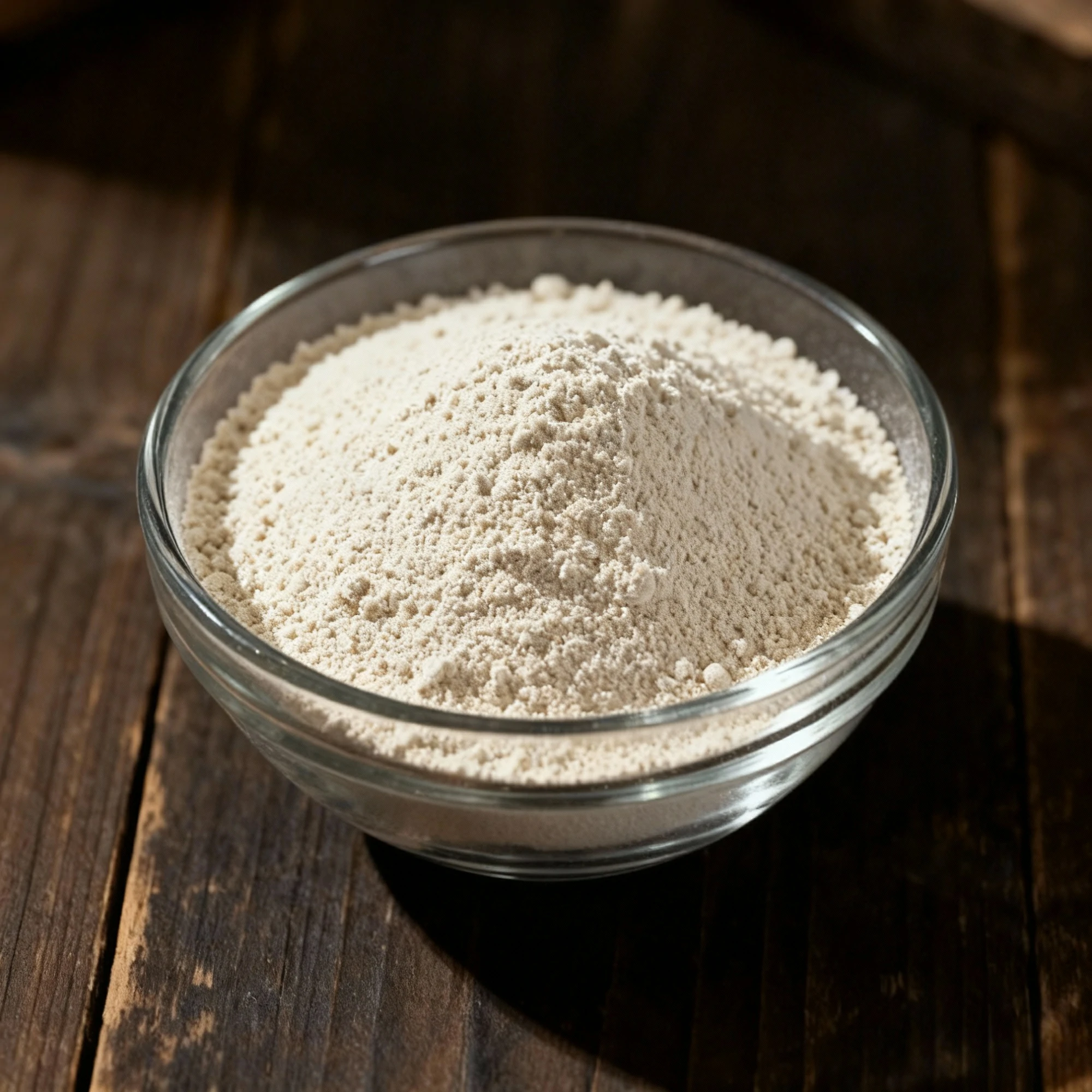

Zinc Glycinate
One unit of:Unknown
Product Info
What is Zinc Glycinate?
Zinc glycinate is a highly bioavailable chelated form of the mineral zinc bonded to the amino acid glycine, widely used in supplements and food fortification to prevent or treat zinc deficiency.
How is Zinc Glycinate made?
| Step No. | Production Stage | Key Action | Control Point & Note |
|---|---|---|---|
| 1 | Raw Material Preparation | Weighing & Dosing | Accurately weigh food/pharma grade Glycine and Zinc Oxide according to the stoichiometric ratio. Raw material purity is critical for the final product's quality and safety. Purified water is used as the reaction medium. |
| 2 | Chelation Reaction | Mixing & Heating | Add raw materials to a glass-lined or stainless steel reactor with purified water. Heat and stir the slurry to facilitate the reaction. Control reaction temperature (e.g., 70-90°C), pH level, and stirring time to ensure complete chelation. |
| 3 | Filtration | Impurity Removal | Filter the resulting Zinc Glycinate solution to remove any unreacted particles or insoluble impurities. Monitor the clarity of the filtrate to ensure efficiency. |
| 4 | Drying | Spray Drying | Atomize the purified solution into a hot air stream to evaporate water and form a fine powder. Control inlet/outlet air temperature and feed rate to achieve the target moisture content and particle characteristics. |
| 5 | Sieving & Milling | Particle Size Control | Sieve the dried powder through a specific mesh screen to ensure a uniform particle size distribution. Milling may be required if particles are oversized. This step is crucial for product flowability and solubility. |
| 6 | Blending | Homogenization | Blend the sieved powder in a large-scale blender to ensure the entire batch is homogeneous. Lot uniformity is confirmed by sampling from different points in the blender. |
| 7 | Final Quality Control | Laboratory Analysis | Test samples against specifications for zinc content, purity (assay), heavy metals (Pb, As), and microbial contamination. The product must comply with relevant standards (e.g., FCC/USP). |
| 8 | Packaging | Filling & Sealing | Package the approved Zinc Glycinate powder into sealed, moisture-proof containers in a controlled, clean environment. Ensure accurate weight and correct labeling with lot number and expiration date. |
Technical Specifications
| CAS Number | 7214-08-6 |
| Chemical Formula | C₄H₈N₂O₄Zn |
| Solubility | Slightly soluble in water |
| Storage Conditions | Cool, dry, dark place |
| Shelf Life | 24 Months |
Applications & Usage
Common Applications:
Mechanism of action:
| Parameter | Zinc Glycinate |
|---|---|
| Functional Category | Nutrient Fortificant; Bioavailable Mineral Source |
| Key Ingredients | Zinc Bisglycinate Chelate |
| Mechanism of Action | The zinc ion is chelated by two glycine molecules, forming a stable, neutrally charged complex. This protects the zinc from binding with dietary inhibitors (e.g., phytates, tannins) in the GI tract. The complex is absorbed intact via more efficient amino acid transport pathways in the intestine, significantly increasing bioavailability over inorganic zinc salts. |
| Application Effect in Product | Increases the zinc content for nutritional claims (e.g., "Good source of zinc"); minimizes mineral-vitamin or mineral-fat interactions that can degrade other nutrients; reduces the metallic aftertaste common with inorganic zinc salts; improves stability and solubility in fortified beverages, supplements, and food matrices. |
Comparison:
| Product Name | Category/Type | Key Features | Strengths (vs peers) | Weaknesses (vs peers) | Best Use Cases | Why Choose |
|---|---|---|---|---|---|---|
| Zinc Glycinate | Chelated Mineral Supplement | Zinc bound to the amino acid glycine. A chelated form known as bisglycinate. | High bioavailability and absorption; exceptionally gentle on the stomach, minimizing GI side effects. | Often more expensive than common forms like gluconate or oxide. | Daily long-term supplementation; individuals with sensitive digestive systems or who experience nausea from other zinc forms. | For superior absorption combined with maximum stomach comfort. |
| Zinc Picolinate | Chelated Mineral Supplement | Zinc bound to picolinic acid, an organic acid. | Considered to have one of the highest absorption rates among all zinc forms. | Can be more expensive; less commonly found than gluconate. | Correcting a known zinc deficiency quickly; situations where maximum absorption is the primary goal. | When you need the most efficient and rapid absorption of zinc. |
| Zinc Gluconate | Organic Salt Supplement | Zinc bound to gluconic acid. The most common form in over-the-counter products. | Widely available, inexpensive, and extensively studied, especially in cold lozenges. | Lower bioavailability compared to chelated forms; more likely to cause stomach upset or a metallic taste. | Short-term use for immune support (e.g., cold lozenges); budget-friendly general supplementation. | For a low-cost, accessible option, particularly for short-term immune boosts. |
| Zinc Citrate | Organic Salt Supplement | Zinc bound to citric acid. | Good bioavailability, often considered comparable to gluconate; has a more palatable, less metallic taste. | Absorption is generally lower than premium chelated forms like glycinate or picolinate. | General supplementation, especially in chewable or liquid forms where taste is a factor. | For a well-absorbed, cost-effective option with a better taste profile. |
| Zinc Oxide | Inorganic Mineral Supplement | An inorganic compound of zinc and oxygen. Primarily used in topical products like sunscreen. | Very inexpensive and stable; high percentage of elemental zinc by weight. | Poorly absorbed by the body when taken orally, making it an inefficient supplement form. | Primarily for topical applications (sunscreens, diaper creams); not recommended for oral supplementation to correct deficiency. | Not a preferred choice for oral supplementation due to very low bioavailability. |
Technical Documents
Available Documentation
Technical dossier available
Safety Data Sheet (SDS)
Available
Certificate of Analysis (COA)
Quality assurance documentation
Technical Data Sheet
Detailed technical specifications